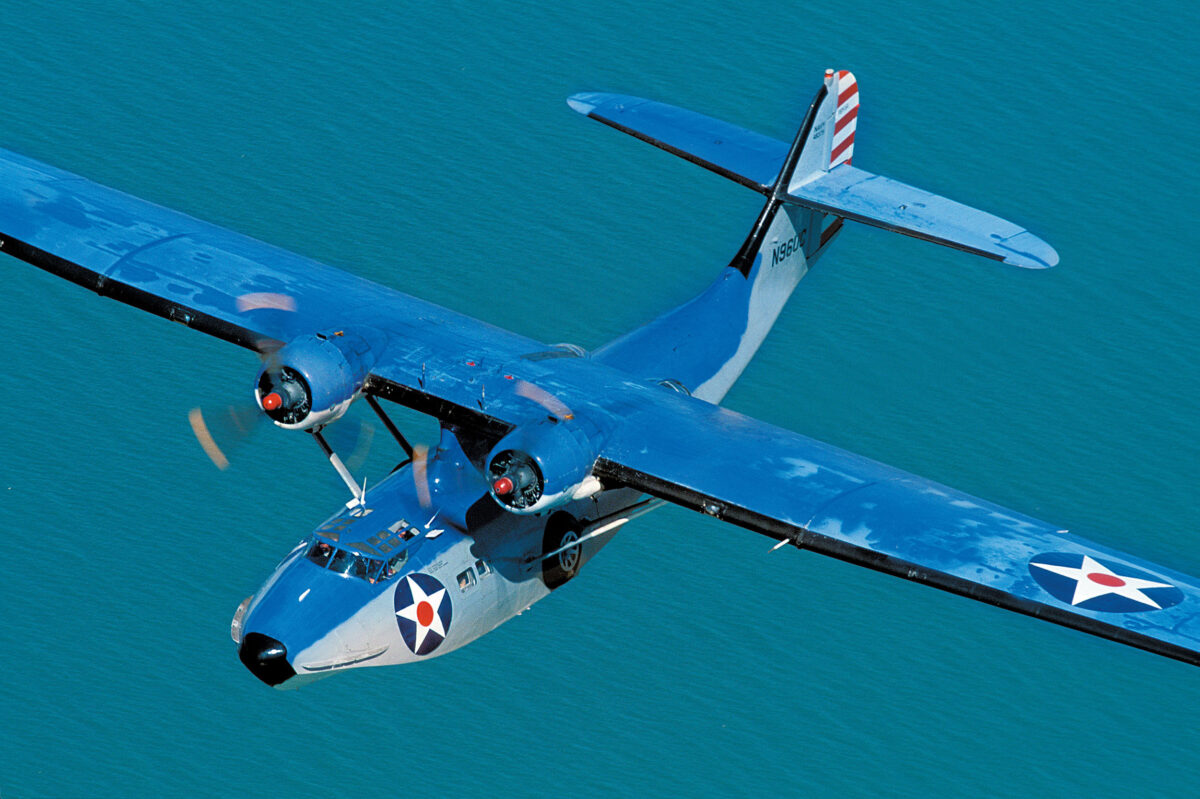1935 was a vintage year for first flights. It saw the arrival of three enormously capable, ahead-of-their-time airplanes that played a huge part in winning World War II: the Boeing B-17, Douglas DC-3/C-47 and Consolidated PBY flying boat, later to become an amphibian as well.
The deeds of the Flying Fortress and C-47 are widely known, but the PBY casts a less obvious shadow across wartime history. And it doesn’t help that the “Pigboat,” as some of its admirers grudgingly call it, didn’t have the warlike mien of the iconic B-17 or the rugged grace of the C-47.
Well, rugged it had…grace, not so much.
But never mind, the PBY, like all great objects of industrial design, exuded an air of absolute purposefulness. The Consolidated team that limned its lines knew exactly what to include and what to leave off: a shapely, minimal hull rather than a standard flying boat barge; two tightly cowled and wing-faired engines close to the centerline, ideal for single-engine handling, though they made directional control on the water a bit difficult; a towering, fish-tail vertical fin to help with the steering both on the water and in the air; clean, cantilever, strutless horizontal stabilizers; and the colossal, fuel-fat wing that gave the PBY range and endurance far beyond anything else with propellers.
Even the waist-blister goiters that became so much a part of the flying boat’s look when they were added to the PBY-4 might have seemed excessive, but they were effective gunnery and observation posts. After all, the famous “Attu Zero,” the largely undamaged example of the Japanese navy’s mythic fighter, was discovered by an airsick crewman who had leaned into his PBY’s blister and opened it to vomit just as the crashed Mitsubishi flashed below him.
The PBY wasn’t without its teething troubles, however. Though the prototype came in over 600 pounds lighter than the contract specified, with a stall speed 10 mph slower and a top speed 12 mph faster with a substantially shorter takeoff run, the vertical tailfin needed to be increased in size to add stability. When the prototype made its first rough-water landings, in 4- and 5-foot seas, the impact of one full-stall touchdown blew out the bombardier’s window and the forward hatch, cracked the windshield, wrinkled the hull and damaged all six prop blades. Consolidated pointed out that a less robust boat would have sunk, but it quickly added numerous stiffeners and gussets.
New flying boat pilots complained that the PBY was brutally heavy on the controls. Old-timers accustomed to the open-cockpit biplane boats that had preceded it laughed and opined that the PBY was light and responsive. Having flown a B-17 of the same era, I can attest that one pilot’s “light and responsive” is another’s “at least I don’t have to go to the gym today.”
Open-sea landings required a practiced touch, since the Pigboat asked to be stalled on at minimum speed— a characteristic that soon made it such a superb rough-water boat. Popped rivets and even sprung seams were not uncommon, but crewmen learned to use the navigator’s pencils to plug rivet holes, and pilots soon realized that a touch-and-go or immediate beaching was the only defense against an open hull skin.
The PBY’s single shapely central pylon was thus a great leap forward, following first use of the concept on the slightly earlier Sikorsky S-42. The streamlined pylon put the wing-mounted engines well above spray height, since water can do a surprising amount of damage to prop tips moving at near-supersonic speeds. More important, in combination with four short fuselage struts, it supported the PBY’s glory: the vast ironing board of a wing that was both an enormous fuel tank and a strong, efficient lifting surface. With a beefy continuous I-beam spar and internal bracing, the wing was actually semicantilevered. At the time, the PBY was the cleanest flying boat, dragwise, ever designed.
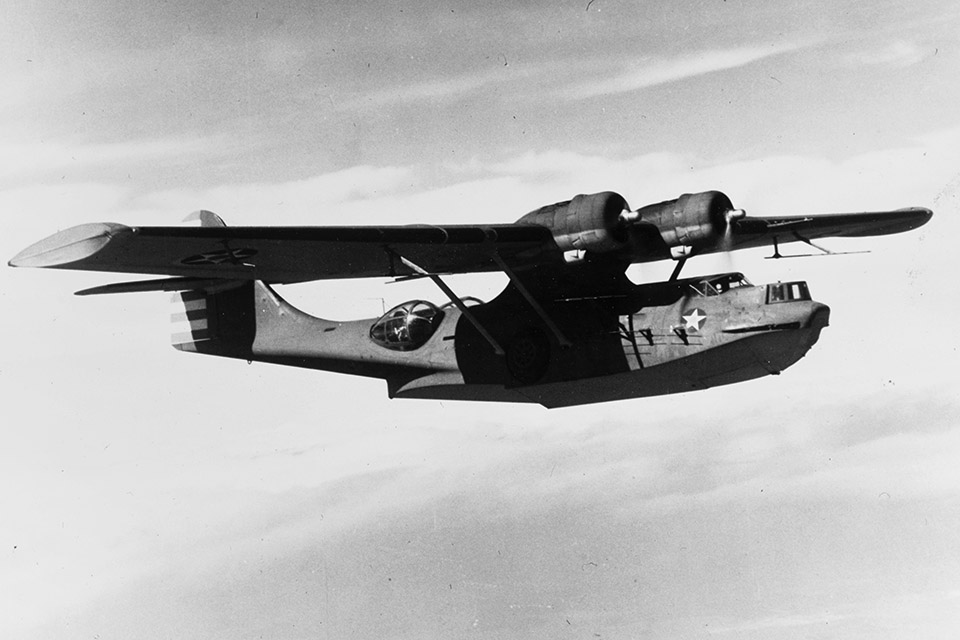
The pylon was just wide enough to serve as the military flight engineer’s lofty but lonely office, his seat suspended from the wing above him like a playground swing. With a window on each side, it gave him a good view of the nacelles, where any oil leakage would first show up. Many civil and commercial PBYs in use all over the world after WWII, however, dispensed with flight engineers and moved all the controls and engine gauges to the cockpit.
Another PBY innovation was totally retractable wing floats, each of which swung out and upward to fair neatly into the wing, the float itself morphing into a wingtip. Had the usage existed at the time, this feature would have been pronounced “cool”…but as with so many cool things, it wasn’t particularly effective. A PBY’s cruise speed remained about the same whether the floats were extended or retracted, though PBY pilots had to be ready to counteract substantial yaw whenever the tip floats were in motion, since each float often moved asymmetrically, answering to its own retraction system. With the floats down, aileron effectiveness was also substantially decreased.
The PBY’s lead designer, Consolidated’s Isaac Machlin Laddon, was a brilliant engineer, though he is not as well known as Kelly Johnson, Ed Heinemann and Alexander Kartveli, who also designed war-winners. “Mac”Laddon was responsible not only for the PBY but the B-24, B-36 and postwar Convair 240/340/440 series of twin-engine airliners.
Another of his team’s PBY novelties was its huge wet wing, the first on any production airplane but today a construction technique that is the aerospace standard. (Laddon had developed the concept for his far smaller Consolidated XBY-1 Fleetster dive-bomber prototype, but only one was built.) A wet wing means that the wing skin itself is the fuel tank, with no need for separate fuel tanks or bladders to be inserted into bays between ribs and spars—a substantial weight-saving feature, but one that of course requires that every seam and rivet be sealed or gasketed. In the case of the PBY, this considerable effort meant half a pound saved per gallon of fuel, or 875 pounds pared.
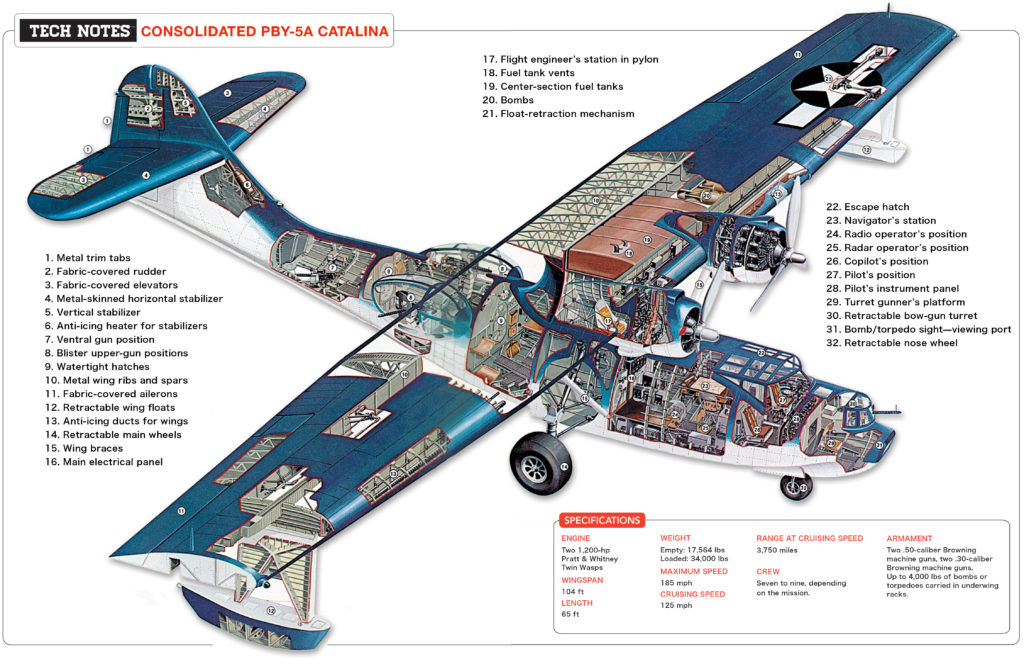
PBYs came in a variety of dash numbers, but the one that really mattered was the PBY-5, which became the world’s largest amphibian. (Today it’s the Russian Beriev B-200 twin-turbofan firebomber, roughly three times the weight of a PBY.) Early PBYs had simple beaching gear—external wheels and struts that were tugged off manually by a swimsuited launching crew once the airplane had been trundled down a ramp and was afloat in the water. This was how Mac Laddon wanted it—simple, no extra weight, no complex retraction system, no internal space given up to wheel wells. His boss Reuben Fleet, Consolidated’s founder and president, thought flying boats should carry “internal beaching gear” everywhere they went, so they could operate independently without the need for a beaching crew. So a PBY-4 was fitted with retractable gear that was deemed usable only for emergency runway use at light weights, and it became the prototype XPBY-5.
“My theory is that it was Reuben Fleet’s way of persuading his engineers to accept his idea for what he envisioned as a fully amphibious version,” says PBY authority David Legg of that initial retractable beaching gear. Converting it into rugged, reliable, full-time landing gear was no small undertaking. It required substantial strengthening of the hull as well as a powerful hydraulic system, and it wasn’t easy to get good ground handling out of narrow-tread main gear sitting under a tippy 14-ton airplane with a high center of gravity. But the PBY-5A went on to become what is generally considered to be the ultimate variant of Consolidated’s flying boat.
The PBY went by several names, the most common being Catalina, the RAF’s designation for the boats that they bought. (The Brits had no idea there was such a thing as Catalina Island, not far from Consolidated’s San Diego headquarters, but Reuben Fleet suggested it.) The U.S. Navy adopted the name several years later, so it’s correct to call a Navy airplane a PBY Catalina, but there’s no such thing in England, any more than there is an F4F Martlet, a C-47 Dakota or any other dual U.S./British designation; the RAF never used any of the U.S. alphanumeric designators.
Despite their long history of building successful seaplanes and flying boats, the British ended up buying some 700 Catalinas to serve alongside far larger Short Sunderlands as the RAF’s primary Coastal Command and Far East patrol bombers. The Brits had hoped the Saunders-Roe Lerwick would fulfill the medium patrol role, but the ghastly, short-coupled Lerwick twin turned out to be unstable and unable to fly on one engine. It was everything the Catalina wasn’t—including relatively heavily armed, with two multi-gun power turrets.
The Canadians named their PBYs Cansos, after a river in Nova Scotia, though one groaner has it that when RCAF pilots first saw a PBY, they said, “This thing can’t fly,” and the engineers answered, “It can so.” Late in the war the Naval Aircraft Factory introduced an improved model it called the PBN-1 Nomad, most of which ended up going to the Soviets. Well before the Nomad, however, there were the informally named Black Cats—Pacific patrol bombers that flew mainly at night and were painted overall flat black.
Another major wartime user of the PBY was the Royal Australian Air Force, and it has been said the Catalina was to Australia every bit as important—and to this day iconic—as the Spitfire was to Britain. With a Japanese invasion a very real threat early in the war, RAAF Catalina coastal patrols and missions into the Solomons were crucial, and when the Allies soon went on the offensive, Aussie Cats ranged as far as the coast of China, mine-laying and night-bombing. It’s said that when the RAAF Catalina crews ran out of bombs, they threw out beer bottles with razor blades inserted in the necks. The bottles whistled as they fell in the dark, assumedly frightening the Japanese.
Not many civilians knew what a PBY was until the December 7, 1941, attack on Pearl Harbor. That changed when hundreds of newspaper photos showed the crumpled, blazing PBYs of the six Navy patrol squadrons based at Kaneohe NAS and Ford Island. They had been 81 fine airplanes, most of them new. Only four flyable Catalinas survived, three of them because they had been aloft at the time of the Japanese attack. One of those became the first U.S. aircraft to attack the Japanese, when it bombed a midget submarine an hour before the main assault.
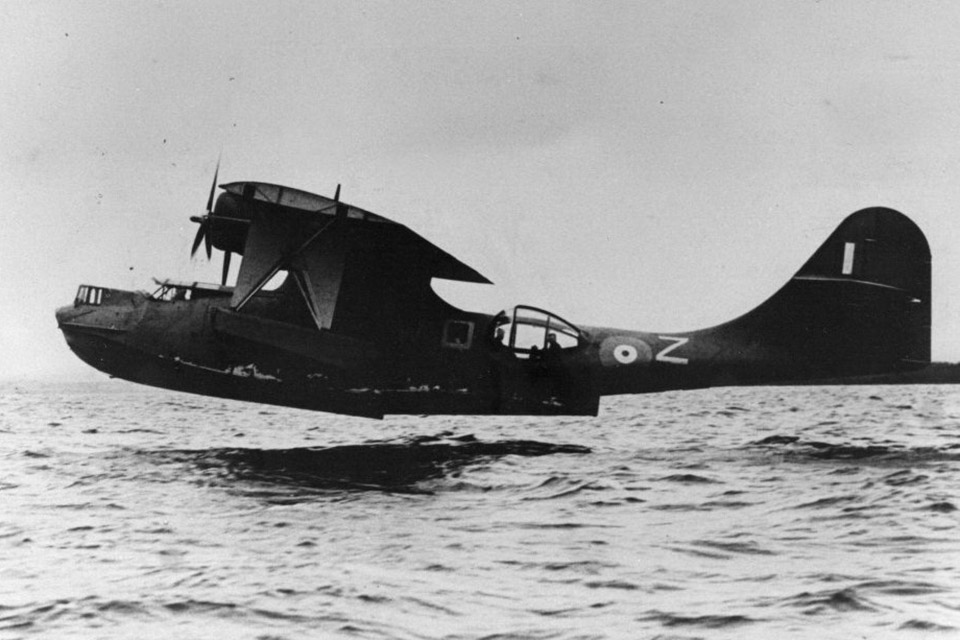
The Cats and other PBYs were surprisingly effective bombers, under the right conditions. Of the 60 Axis submarines sunk by the Navy in all theaters of the war, 25 went down under bombs from PBYs, plus one spotted by a PBY but sunk by a destroyer. Another 13 were sunk by PB4Ys—the Navy version of the B-24 Liberator—giving Consolidated aircraft credit for almost two-thirds of all subs sunk by the U.S. in WWII. More were deep-sixed by RAF Coastal Command Catalinas and Liberators, but a British Catalina’s most celebrated feat was spotting the battleship Bismarck after it sank the Royal Navy battle cruiser Hood and scuttled away under cover of fog. The Cat didn’t sink the Bismarck, but appropriately, the critical, crippling blow was left to another antique, the Fairey Swordfish.
The PBY’s bombing career started less auspiciously. The first-ever U.S. offensive airstrike of the Pacific War, which came nearly four months before the Doolittle Raid, was flown by six PBYs out of Ambon Island, in the Dutch East Indies, to bomb a Japanese base at Jolo, in the southwest Philippines. PBYs were the only airplanes with the range to make the 1,600-mile round trip. Four of the six were shot down by Japanese fighters, and in his post-action report, one of the surviving pilots wrote, “It is impossible to outrun fighters with a PBY-4. Under no circumstances should PBYs be allowed to come in contact with enemy fighters unless protected by fighter convoy.” A PBY typically cruised at 105 to 125 mph, which meant that a well-armed Cessna could have taken one on.
Indeed the PBY’s most effective defensive maneuver quickly became lumbering toward the nearest cloud bank to hide. One Australian Catalina pilot even evaded Zeros by ducking into a volcanic ash plume.
As the war in Europe heated up and American participation became inevitable, few thought the elderly, minimally armed and painfully slow PBY would be around much longer, so Consolidated started work on its successor, the twin-engine P4Y Corregidor—well before the name became synonymous with defeat. The P4Y might have been an order of magnitude better than the PBY, but we’ll never know; certainly it was an order of magnitude uglier. It had a highaspect-ratio, high-lift, low-drag, laminar-flow wing—the Davis airfoil that was soon to become famous on the B-24—but it was designed to use the powerful but troublesome Wright R-3350 engines desperately needed for the B-29. The War Department canceled the P4Y contract after just one prototype was built, and the Louisiana factory that was built to crank out Corregidors ended up building yet more Catalinas.
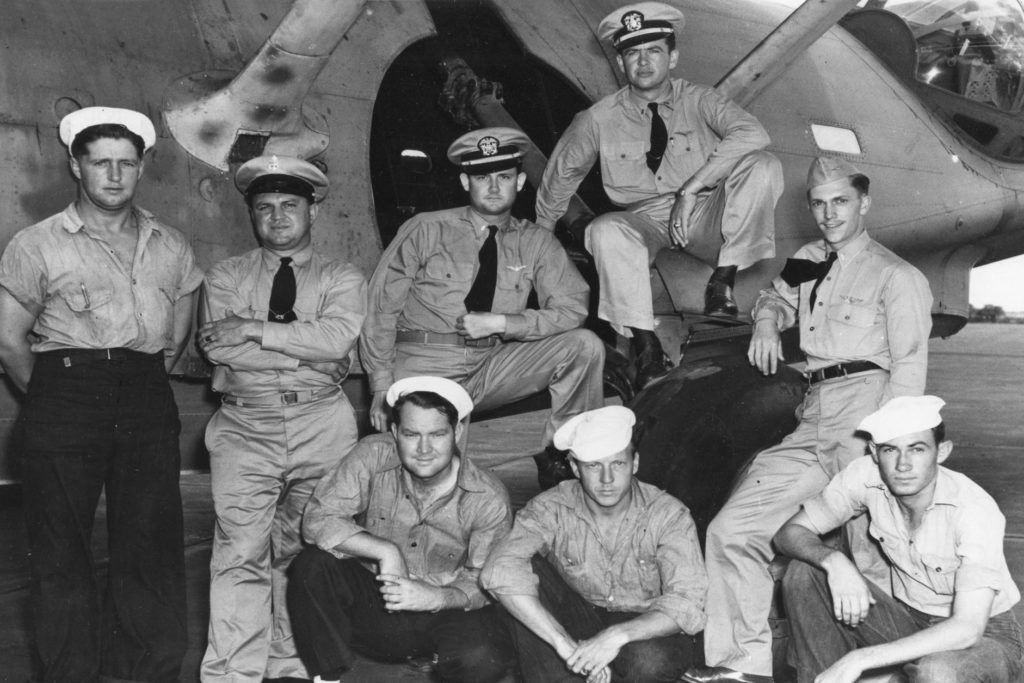
For the U.S. Catalinas, the equivalent of the RAF’s sink-the-Bismarck moment was the brief break in Pacific clouds through which a Navy PBY crew saw the Japanese fleet racing toward Midway. In fact, the same phrases reappear in accounts of nearly every WWII naval battle, Atlantic and Pacific: “A PBY spotted the carrier….While Catalinas shadowed the fleet through the night….As the PBY followed the phosphorescent wakes….When the fog suddenly lifted, the PBY saw the picket destroyers….” Few such slugfests started without at least one PBY tracking the combatants from above.
Particularly in the Pacific theater, air-sea rescue PBYs called Dumbos retrieved thousands of ditched pilots and shipwrecked seamen, often under fire and usually in seas that would have trashed a lesser boat. One Dumbo landed three times to pick up downed bomber crews and eventually took off with 25 extra men aboard; for that mission, Navy Lieutenant Nathan Gordon became the only PBY pilot to be awarded a Medal of Honor. Another Cat needed a three-mile takeoff run to lift a total of 63, including its own crew, and the pounding probably popped half the rivets in the hull. But the record goes to the Australian Catalina that carried 87 Dutch sailors—standing room only, thank you—after Japanese bombers mauled their freighter. With 15,000 pounds of passengers alone, to say nothing of the airplane’s fuel and crew weight, that put the RAAF PBY well over gross, but the Cat’s basic weight-and-balance rule was that if the payload hadn’t yet sunk the boat, it would somehow take off.
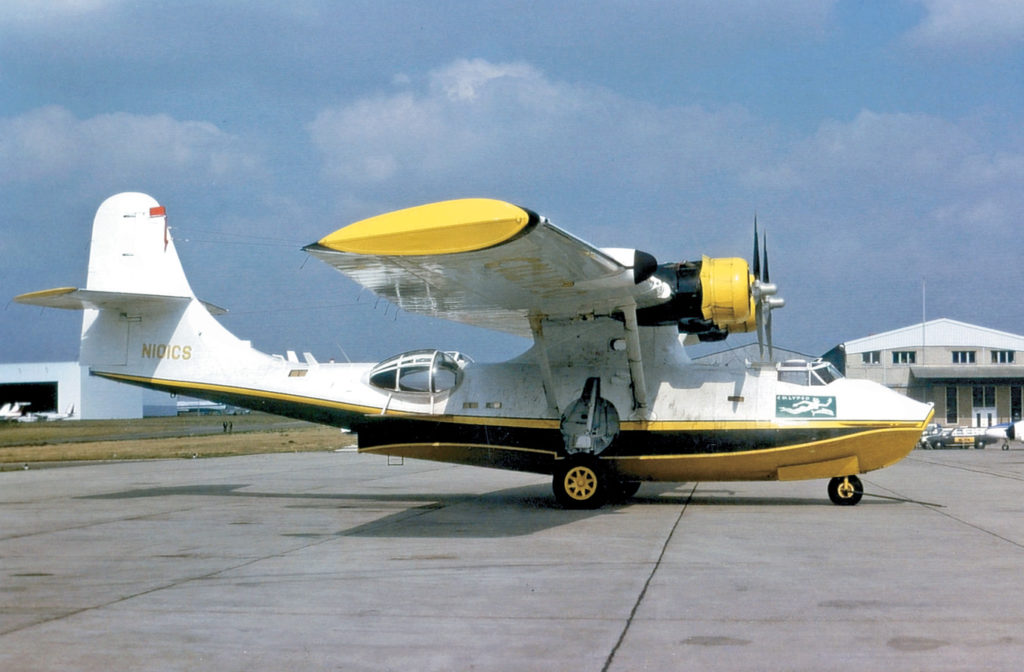
Beyond its stellar military service, the PBY enjoyed a long civil history before, during and after WWII, and it isn’t over yet. One of the most widely known of all converted warbirds among people who think Mustangs are cars was the Cousteau Society’s Calypso, operated during the 1970s by the famous oceanographer and environmentalist Jacques-Yves Cousteau and often flown by his son Philippe. Tragically, Philippe Cousteau was killed during a post-overhaul flight test of Calypso when it nosed over during a highspeed water run on the Tagus River, in Portugal, in 1979.
Yet the PBY’s commercial career had started—false-started, actually—a good 40 years earlier, when Consolidated proposed using PBYs as transcontinental airliners that could use lakes and rivers en route for an emergency landing, if necessary. Several American and British airlines did buy PBYs, but as survey airplanes, not passenger carriers.
In 1937 Consolidated did sell one very special civil PBY—it was officially a Model 28—to rich, eccentric zoologist Richard Archbold. A research associate at New York’s Museum of Natural History, Archbold was also a private pilot, so his Consolidated boat became, at least until the advent of converted-warbird corporate transports in the 1950s, the largest private plane in the world.
Archbold named the airplane Guba, a New Guinean word meaning “sudden storm,” and he intended to use it to continue his explorations of the Pacific island. Guba’s first major flight was a nonstop transcontinental trip from San Diego to New York in 1937, the first ever by a flying boat, establishing a speed record for the category that wasn’t broken until April 1944, by a Navy Martin Mars. Archbold sold Guba to the Soviet government before going on to New Guinea, however, since they desperately needed the aircraft to do long-range searches for the Russian pioneer pilot Sigismund Levanevsky, who was lost in the Arctic (and never found). Archbold immediately bought a second Model 28—Guba II—and not only made it to New Guinea but carried on the rest of the way around the world for another record: the first-ever seaplane circumnavigation.
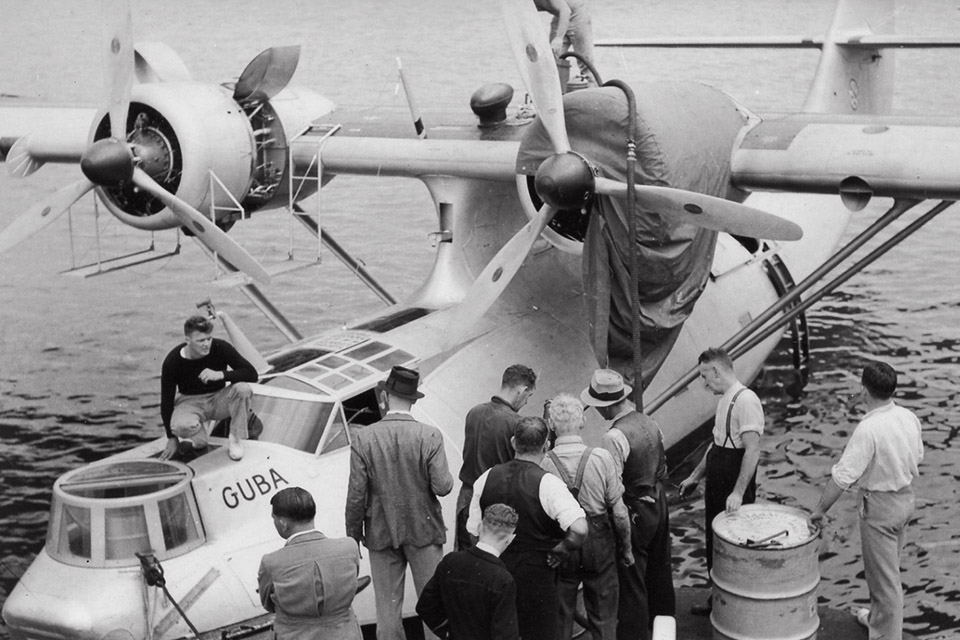
Another PBY record that has yet to be broken was set by a small cadre of Catalinas that were operated by the Australian airline Qantas during WWII. They flew privileged passengers between Perth and Ceylon, near India, and from June 1943 to July 1945, several of them stayed aloft, nonstop and unrefueled, for more than 32 hours. Super Airbuses and extended-range 747s fly faster and farther, but none has ever come close to making a longer-duration passenger flight (see “The PBYs That Flew Forever,” July 2011 issue.)
After WWII, some surplus PBYs inevitably were converted into flying yachts, during the private-flying heyday that encouraged fantasies of flying cars, personal jetpacks, dad commuting in a Piper and seaplanes bobbing in lakes with fishermen on one float and bathing beauties on the other. Luxury PBYs fit right in.
The most impressive lipstick-on-a-Pigboat scheme was the early-1950s Landseaire. Even Egypt’s King Farouk had one on order before his abdication. The base price of a Landseaire was $265,000, which is about $2.3 million today and would be a bargain, since that’s roughly the cost of a bush-taxi Cessna Caravan single on amphibious floats. The Landseaire had 14-foot dinghies under each wing, hoisted to fit flush by cables that had once lifted torpedoes and bombs, and the gunners’ blisters were replaced by one-piece, blown-Lucite “flying bay windows” that invariably were photographed for various magazines (including a snarky Life feature) with a bikinied babe, drink in hand, stretched out on the interior foam-rubber cushion.
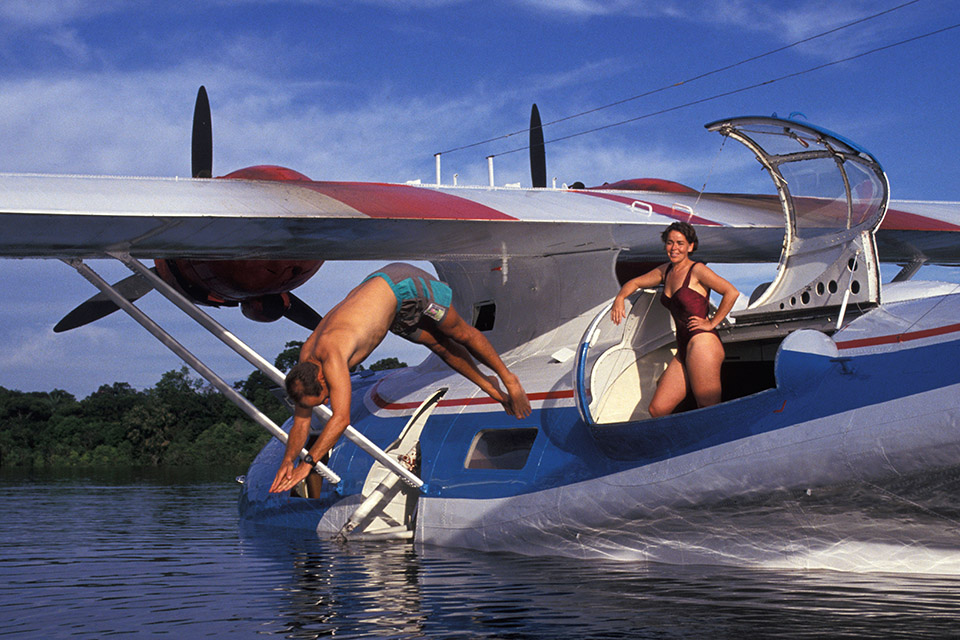
Equally well-known—a relative term—among modified PBYs was the Bird Innovator, the world’s only four-engine Cat. A California company added a pair of 340-hp, geared Lycoming flat-6 engines outboard of the stock 1,200-hp Pratt radials to provide better performance at high gross weights as well as improved water maneuverability—the Lycs had reversible three-blade props—but apparently the Innovator was the answer to a question nobody had bothered to ask. Only one was built, and a subsequent owner eventually removed the extra engines.
One thing that civil PBY conversions accomplished was a necessary bit of beautification: what came to be known as the “clipper bow,” a fairing-in of the cowl ahead of the windscreen to eliminate the awkward nose turret. If there was one discordant note in the Cat’s refrain, it was that squared-off little greenhouse that gave the airplane the look of an angry hognose snake, a protuberance that seemed an add-on and if anything harked back to World War I observation airplanes with a freezing Frenchman standing upright in the bow. On early PBYs, in fact, the “turret” was indeed nothing more than a semi-open bombardier/observer’s post. Guns came later—ineffective single or twin .30s in the nose, single .50s in each waist blister and sometimes a .30-cal firing from a belly hatch near the tail.
Today the PBY remains the best-known seaplane in the world. Until the last of them were recently retired, photos of Canso and Catalina waterbombers appeared regularly on the front pages of 21st-century newspapers, flying over forest fires in the U.S., Greece, Spain, France and elsewhere.
No flying boat or amphibian was ever produced in greater numbers than the two basic variants of the PBY. Between Consolidated, the Naval Aircraft Factory, Boeing Canada, Canadian Vickers and the Soviets, 1,452 wheelless boats were manufactured, plus 1,853 amphibs with retractable gear. Many sources give figures of 4,000-plus total, but PBY expert David Legg comes up with a combined production run of 3,305. (Legg runs The Catalina Society—catalina.org.uk— which operates a restored PBY-5A based at Duxford, England.)
It was a fortuitous combination of talents that made the PBY effective despite its painfully slow airspeed and relatively ineffective armament. The old P-boat was hell for stout, handled open-water landing and takeoffs with equanimity, would lift anything that could fit into it, could carry 2 tons of bombs or torpedoes and had butt-busting duration and loiter capability. Since the future of commercial flying boats and amphibs seems to stretch no farther than firefighting, we’ll surely never see its like again.
For further reading, frequent contributor Stephan Wilkinson recommends: PBY: The Catalina Flying Boat, by Roscoe Creed; Black Cats and Dumbos: WWII’s Fighting PBYs, by Mel Crocker; and Consolidated PBY Catalina: The Peacetime Record, by David Legg.
Originally published in the May 2013 issue of Aviation History Magazine. To subscribe, click here.
Check out our exclusive online modeling review and build your own classic PBY-5A!

